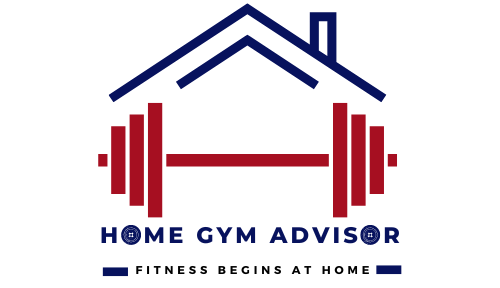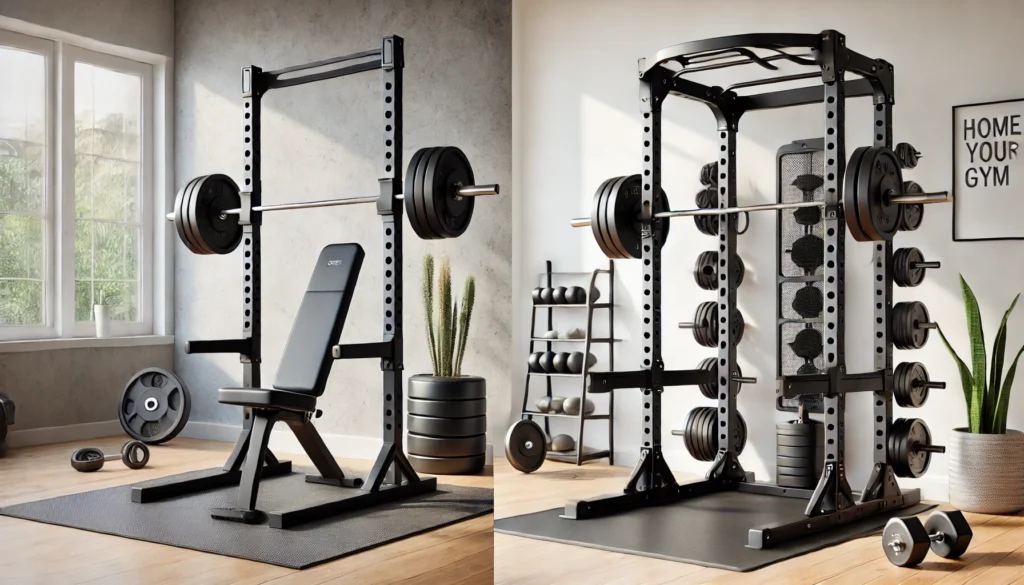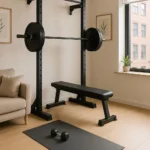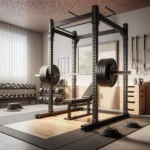Introduction: Finding Your Perfect Home Gym Setup
Creating the perfect home gym can be both exciting and overwhelming. With so many options available, it’s essential to choose the right equipment that suits your needs and fits your space. Whether you’re a fitness enthusiast looking to enhance your workout routine or a beginner starting from scratch, the decision between a squat stand and a power rack can be a game-changer. In this article, we’ll explore the pros and cons of each option to help you make an informed choice.
-
Understanding Squat Stands
Table of Contents
1.1. What is a Squat Stand?
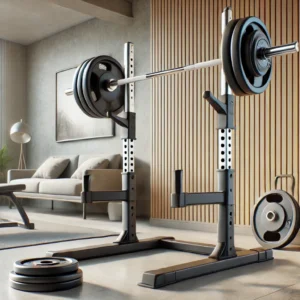
A squat stand is a compact and practical piece of strength training equipment, primarily designed for individuals who want to perform squats and other barbell exercises but may not have the space or budget for a larger power rack. Unlike a full power rack, which offers a more enclosed structure, a squat stand is more minimalist and space-efficient, making it a popular choice for home gym owners with limited space or those who prefer a simpler setup.
The basic design of a squat stand consists of two adjustable vertical posts, often made from durable steel, that are set apart at a width wide enough to accommodate a barbell. These posts are adjustable in height, allowing the user to set the barbell at the appropriate starting position for different exercises. This adjustability is especially useful for squats, as it ensures the barbell is at the right height for the lifter to safely rack and un-rack the bar when performing sets.
Squat stands are typically open on all sides, providing an unrestricted lifting area with minimal structure. This open design allows the user more freedom of movement and can be ideal for performing exercises like squats, overhead presses, and rack pulls. While squat stands are simpler than power racks, they still offer key features that make them effective for strength training. For example, some squat stands include safety arms or spotter arms, which are adjustable horizontal bars that can catch the barbell if the lifter fails to complete a lift. These safety arms are particularly important when lifting heavy weights and training without a spotter.
1.2. Pros of Squat Stands
1.2.1. Portability and Space-Saving Design
Squat stands are designed to be more compact than power racks, making them an excellent choice for home gyms with limited space. Their minimalistic structure, typically featuring just two vertical posts, allows them to fit into tight areas and makes them easy to move around. This portability means you can effortlessly rearrange your workout setup and store the stands when not in use, freeing up valuable floor space. Ideal for those without a dedicated workout area, squat stands offer a practical and space-saving solution without compromising on functionality.
1.2.2. Cost-Effective
Squat stands are generally more affordable than power racks, making them an excellent budget-friendly option for those who want to build a home gym without spending a fortune. Their simpler design and fewer components contribute to a lower cost, allowing fitness enthusiasts to invest in quality equipment without breaking the bank. This cost-effectiveness makes squat stands a practical choice for beginners and anyone looking to maximize their home gym setup while keeping expenses in check.
1.2.3. Simplicity and Ease of Use
Squat stands are straightforward to set up and use, making them an excellent option for beginners. Their simple design means there’s no complex assembly required, and they are intuitive to operate. This ease of use allows those new to strength training to start their workouts without the hassle of figuring out complicated equipment, ensuring a smooth and stress-free introduction to their fitness journey.
1.3. Cons of Squat Stands
1.3.1. Limited Stability and Safety
Squat stands are less stable than power racks, which can be a significant concern when lifting heavy weights. Their simpler design means they don’t offer the same level of support and stability as power racks. Additionally, squat stands lack the built-in safety features, such as safety bars or pins, that power racks provide. This absence of safety mechanisms can increase the risk of injury during heavy lifts, making squat stands less suitable for advanced lifters or those prioritizing safety.
1.3.2. Fewer Exercise Options
While squat stands are great for performing squats, they offer fewer exercise options compared to power racks. Their simpler design and limited features mean that they can’t accommodate the same variety of exercises. Power racks, with their additional components and attachments, provide a more versatile workout experience, allowing you to perform a broader range of strength training exercises. This limitation makes squat stands less suitable for those seeking a comprehensive fitness regimen.
1.3.3. Lower Weight Capacity
Squat stands typically have a lower weight capacity than power racks, which can be limiting for more advanced lifters. This reduced capacity means that squat stands may not support the heavier weights that experienced lifters often use, potentially hindering progress and limiting the intensity of workouts. For those aiming to lift heavier and push their limits, a power rack’s higher weight capacity is more suitable to meet their advanced training needs.
Understanding Power Racks
2.1. WHAT IS A POWER RACK? 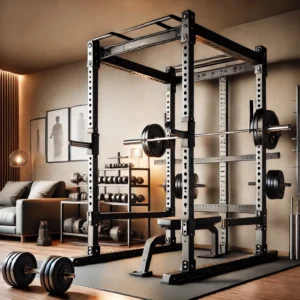
A power rack, also referred to as a squat rack or power cage, is a highly versatile and indispensable piece of equipment for any serious strength training regimen. Designed to provide a secure environment for lifting heavy weights, the power rack is primarily used for exercises like squats, deadlifts, bench presses, and overhead presses, but its utility extends well beyond those core movements.
The power rack consists of four vertical posts, which are usually made from steel, and these are connected by horizontal bars, forming a robust and stable frame. The design allows the lifter to load heavy barbells onto the rack safely and perform lifts without the need for a spotter. This makes it an ideal piece of equipment for individuals training at home, where safety and convenience are top priorities.
One of the most appealing features of a power rack is its customizability. Many racks come with adjustable safety bars that can be set at different heights to catch the barbell in case of a missed lift, providing a critical safety feature for heavy lifting. This means lifters can train with confidence, even when attempting max-effort lifts or new movements.
Additionally, power racks often include pull-up bars for upper-body exercises like chin-ups and pull-ups, making it a multi-functional tool for building both strength and endurance. Attachment points for accessories such as dip bars, resistance bands, and landmine attachments further enhance the versatility of the rack, allowing for a more comprehensive full-body workout.
2.2. Pros of Power Racks
2.2.1. Enhanced Stability and Safety
Power racks offer superior stability and safety features, making them suitable for heavy lifting. Safety bars or pins can catch the barbell if you fail a lift, reducing the risk of injury.
2.2.2. Versatility for a Wide Range of Exercises
Power racks are incredibly versatile and can be used for various exercises, including squats, bench presses, deadlifts, pull-ups, and more.
2.2.3. High Weight Capacity
Power racks typically have a higher weight capacity than squat stands, making them suitable for advanced lifters.
2.3. Cons of Power Racks
2.3.1. Requires More Space
Power racks are larger and bulkier compared to squat stands, which means they require more space in your home gym. Their robust structure and additional features contribute to their size, making them less suitable for smaller workout areas. This added bulk can be a consideration for those with limited space, as power racks need a dedicated area for safe and efficient use.
2.3.2. Higher Cost
Power racks are generally more expensive than squat stands, which can be a consideration for those on a budget. Their robust design, additional features, and higher weight capacity contribute to the increased cost. While they offer greater versatility and safety, the higher price point may not be suitable for individuals looking to build a home gym on a limited budget. Therefore, it’s essential to weigh the benefits against the cost when making a decision.
2.3.4. More Complex Assembly
Power racks can be more challenging to assemble due to their size and additional features. The complexity of their design, including the various attachments and components, means that putting them together can require more time and effort compared to squat stands. This can be a consideration for those who prefer a simpler setup process or lack the tools and experience needed for assembly.
Comparing Squat Stands and Power Racks
3.1. Feature Comparison
3.1.1. Size and Space Requirements
Squat stands are more compact and take up less space than power racks, making them ideal for smaller home gyms. Their minimalistic design allows them to fit into tighter spaces, making them a practical choice for those with limited room. In contrast, power racks, while larger and requiring more space, offer greater functionality and stability. This makes power racks a better option for those who have the space and are looking for a more versatile and stable piece of equipment for their workouts.
3.1.2. Weight Capacity
Power racks generally have a higher weight capacity than squat stands, enabling them to support heavier lifting and more advanced training. This increased capacity makes power racks an excellent choice for those who aim to lift heavier weights and push their strength training to the next level. For advanced lifters, a power rack’s robust design ensures it can handle the demands of intense and challenging workouts.
3.1.3. Versatility and Exercises
Power racks offer a wider range of exercise options, including squats, bench presses, deadlifts, and pull-ups. This versatility makes them a more comprehensive choice for those looking to perform a variety of strength training exercises. In comparison, squat stands are more limited in their functionality, primarily designed for squats and a few other exercises. This makes power racks a better option for those seeking a full-body workout with diverse exercise possibilities.
3.1.4. Safety and Stability
Power racks provide enhanced safety features, such as safety bars and pins, which significantly increase safety during heavy lifts. Additionally, their robust structure makes them more stable compared to squat stands. This stability and the inclusion of safety mechanisms make power racks a preferable choice for those who prioritize safety and are engaged in intense strength training exercises.
When setting up a home gym, choosing between a squat stand and a power rack can significantly impact your workout experience. Both pieces of equipment offer unique advantages and drawbacks, catering to different needs and preferences. To help you make an informed decision, we have prepared a detailed comparison table outlining the key features of squat stands and power racks. This comparison will provide insights into their size, weight capacity, versatility, safety, and cost, allowing you to select the equipment that best suits your fitness goals and available space.
| Feature |
Squat Stand |
Power Rack |
|---|---|---|
| Size | Compact, space-saving | Larger, requires more spac |
| Weight Capacity | Lower, suitable for moderate lifting | Higher, suitable for heavy lifting |
| Versatility | Limited exercise options | Wide range of exercises |
| Safety | Basic stability, fewer safety features | Enhanced stability, includes safety bars and pins |
3.2. Cost Comparison
Squat stands are generally more affordable, making them a budget-friendly option for home gym enthusiasts.
Power racks, while more expensive, offer greater versatility and safety features, justifying the higher cost for serious lifters.
3.3. User Experience
-Beginners: Squat stands are easy to use and set up, making them ideal for those new to strength training.
-Advanced Lifters: Power racks provide the stability and safety needed for heavy lifting and more complex workouts.
-Small Space Owners: Squat stands are perfect for limited spaces, while foldable power racks can also be a viable option.
Choosing the Right Option for You
4.1. Factors to Consider
4.1.1. Available Space
Assess the space in your home gym to determine if a squat stand or power rack will fit comfortably. Measure the available area and consider the dimensions of each option, keeping in mind that you’ll need extra room for safe movement and exercise. By carefully evaluating your space, you can ensure that your chosen equipment fits seamlessly into your home gym setup, providing a practical and efficient workout environment.
4.1.2. Fitness Goals
Consider your training goals and the types of exercises you want to perform. If you need a wide range of exercise options, such as squats, bench presses, deadlifts, and pull-ups, a power rack might be more suitable. Its versatility allows for a comprehensive workout routine, making it ideal for those who want to engage in various strength training exercises. In contrast, squat stands are more limited in the range of exercises they can support.
4.1.3. Budget
Determine your budget and weigh the cost against the benefits of each option. Squat stands are generally more affordable, making them a suitable choice for those on a budget. On the other hand, power racks, while more expensive, provide greater versatility and safety features, such as safety bars and pins, making them a worthwhile investment for those who require a more comprehensive and secure workout setup.
4.2. Recommendations Based on User Type
-Beginners: Squat stands are a great starting point due to their simplicity and lower cost. They provide the essential functionality needed for basic strength training.
-Advanced Lifters: Power racks are ideal for those who require a higher weight capacity and greater exercise variety. The added safety features also make them suitable for heavy lifting.
-Small Space Owners: Squat stands are space-efficient and can be easily stored when not in use. Foldable power racks are also an option for those with limited space but who still want the benefits of a power rack.
Conclusion
Choosing between a squat stand and a power rack depends on your individual needs, available space, and fitness goals. Squat stands are cost-effective and space-saving, making them ideal for beginners and those with limited space. On the other hand, power racks offer enhanced stability, safety, and versatility, making them suitable for advanced lifters and those looking for a comprehensive home gym setup.
Ultimately, the right choice will depend on your specific requirements and preferences. Take the time to assess your needs and make an informed decision that will help you achieve your fitness goals.
FAQ Section: Squat Stand vs Power Rack
What is the primary difference between a squat stand and a power rack?
– The primary difference lies in their structure and functionality. Squat stands are more compact and simpler, designed mainly for squats. Power racks are larger and more versatile, allowing for a wide range of exercises and offering enhanced safety features.
Which option is safer for heavy lifting?
– Power racks are generally safer for heavy lifting due to their stability and built-in safety features like safety bars and pins that catch the barbell if you fail a lift.
Can I perform the same exercises on a squat stand as I can on a power rack?
– While you can perform squats on both, power racks offer a wider range of exercises, including bench presses, deadlifts, pull-ups, and more. Squat stands are more limited in their functionality.
How do I know if I have enough space for a power rack?
– Measure the available space in your home gym and compare it to the dimensions of the power rack you are considering. Keep in mind that you’ll also need extra space around the rack for movement and exercise. Foldable power racks can be a space-saving option if you have limited room.
Now that you have a comprehensive understanding of squat stands and power racks, it’s time to make your decision. Whether you prioritize cost, space, or versatility, there’s a solution that will fit your needs. Don’t hesitate to invest in quality equipment that will support your fitness journey and help you reach your goals.
Ready to build your dream home gym? Explore our top picks for squat stands and power racks, and take the first step towards achieving your fitness aspirations. Happy lifting!
